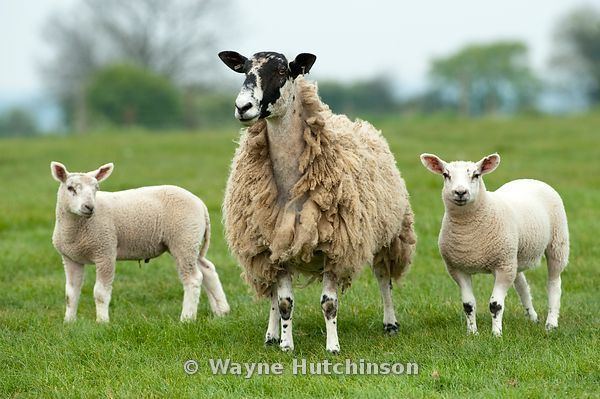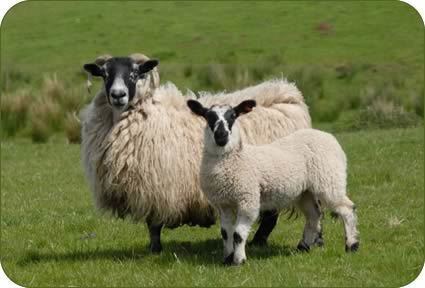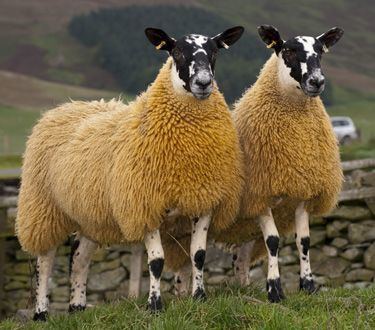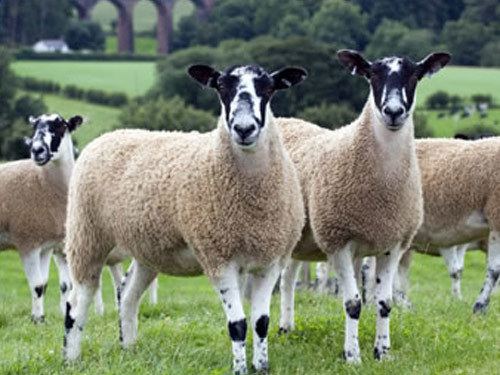 | ||
Representative species Hampshire sheep, Polypay, Canadian Arcott | ||
In sheep farming, the term Mule is used to refer to a cross between a lowland ram (usually a Bluefaced Leicester) and a purebred upland (or hill) ewe.
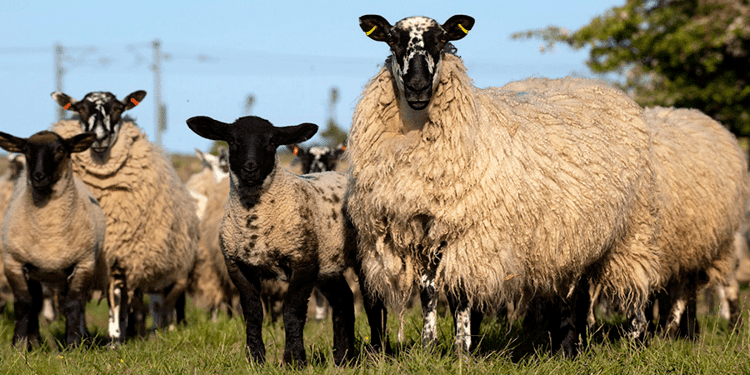
The production of such mule ewes is a widely used breeding management system which offers several advantages to the farmer. Cross breeding the hill ewe with the lowland ram brings about hybrid vigour or heterosis, which brings the best characteristics of both breeds into one ewe that can be used in producing lamb for the table. The hill ewe, for example the Scottish Blackface, is a hardy animal with good, natural mothering instincts. She is, however, not very prolific and tends to produce one lamb: suited to the harsh conditions. The lowland ram, such as the Blueface Leicester is prolific, producing ewes which give 1-3 lambs and capable of producing enough milk to rear them. The cross between the two, in this case the Scottish mule, has good mothering instincts, good sized lambs and prolific milk production.
This mule is usually crossed with a meat-type ram, such as the Suffolk or Texel, to produce these market lambs. This breeding also allows a convenient system of management whereby hill ewes can be reared in difficult areas where other species would not survive to produce lamb. At the end of her productive life (around 4 years) she can be moved to a lowland farm and crossed with the Blueface Leicester or a similar breed to produce the mules for market lamb production.

Types of mules
